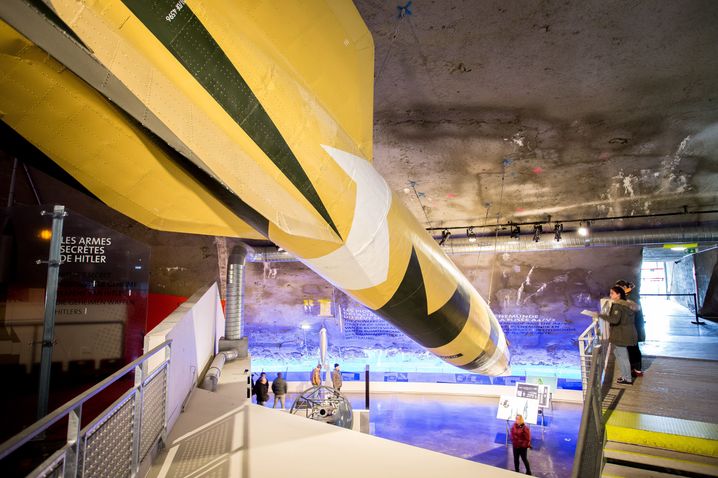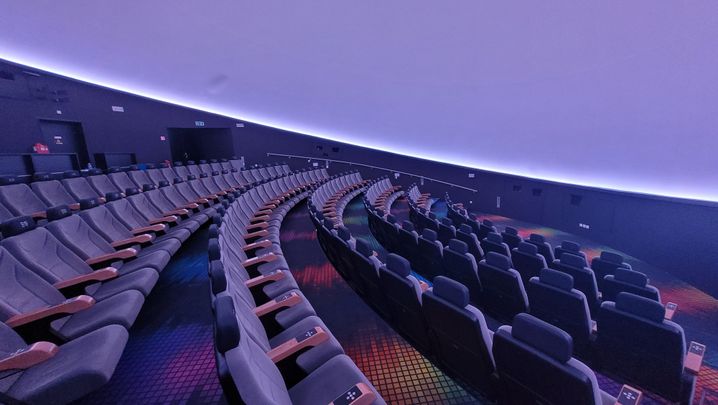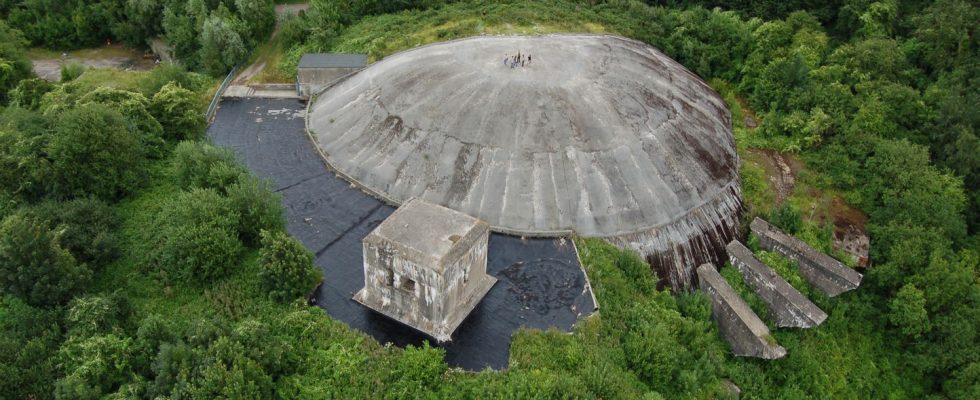A 5.5 meter thick concrete dome that cuts you off from the outside world. Cold, damp tunnels winding underground. It is in this impressive setting that the La Coupole history center and planetarium is located, 5 kilometers from Saint-Omer, in Pas-de-Calais. Installed in a former secret Nazi base built to launch V2 missiles on London, the world’s first rockets, the site, which aims to be a “space for understanding the historical and scientific issues” of the Second World War, offers a return on the conflict and conquest of space through a local prism.
As May 8 opens the ball of commemorations of the Second World War, including the 80th anniversary of the D-Day landings and the Liberation, 20 minutes visited this impressive place, whose commemorations begin on May 31 (read box).
An unusual place
If the bunker project was never completed and the base never put into service because of the Allied bombings and the Landings, the site with 120,000 visitors per year has something to impress: made up of hundreds of meters of galleries, it is topped a reinforced concrete dome weighing 55,000 tonnes and 77 meters in diameter. “Which makes it an inviolable bunker,” says the director of La Coupole, Philippe Queste. There is no doubt about it: in the tunnels and under the dome, there is freezing cold and absolute silence, and no telephone network passes through the thick walls.
The history of this place, whose construction began in 1943, is described at the start of the visit, particularly in the tunnels which lead to the dome. There are niches which return to specific events of the Second World War, such as the tragedy of the Loos train, which left for the camps on the day of the Liberation of the region.
Under the dome, we discover in detail the history of the V1 and V2 missiles, of which we can observe original models. “Our copy of V1 even flew, which is extremely rare,” slips Philippe Queste.
A journey through history
The museum, opened in 1997, devotes a large part of the dome to the various launch sites and research centers in Peenemünde, Germany, where the V2s were manufactured and assembled before the site was bombed, and Los Alamos, in the United States. United States, where research on the atomic bomb was carried out at the same period. A focus is also placed on the Dora concentration camp, where “the Germans relocated the production and assembly of V2s after the bombing of Peenemünde and where a third of the deportees died during the digging of the tunnels in abominable conditions », underlines the director of La Coupole. Then comes a part on the conquest of space, the recovery of scientists after the war and the discovery of Dora, as well as a memorial for the deportees of the camp.
Because the primary goal of this place is this: to highlight the “hidden side” of the history of the conquest of space, “over which we have cast a veil” according to Philippe Queste. “When we talk about the conquest of space, we talk about science, we put stars in people’s eyes, but we forget that it was made from the V2 rocket, which was produced by deportees,” continues the director. There are 20,000 people who died at Dora to create the factory and produce the missiles. It is about bringing this horrible story, which affected thousands of people, back to the forefront. We owe something to the memory of these people. Today, talking about the conquest of space without remembering that is taking the risk that history will stutter. »
The V2, first rocket
A dark story which does not prevent the center from returning to the scientific epic of V2. Real rockets before their time, these missiles 14 meters high and with a range of 320 kilometers produce, thanks to their engine, a thrust of 25 tonnes to “escape the atmosphere, then come back down” to strike their target with a load of approximately 750 kg of TNT equivalent.

The immersion continues in the two V2 preparation rooms, located deep under the dome. If launches had taken place, it is here that the rocket would have been “straightened, placed on its rail support and filled with fuel”, before being brought to the launch pad, describes Philippe Queste.
It is also impossible to talk about the V2 without talking about their designer, the German engineer Wernher von Braun, recovered by the United States after the war. “He became an American citizen and led the country to the lunar soil with the Apollo program”, for which he developed the Saturn V rocket, recalls the director of La Coupole.
A place of memory
In parallel with the history of the V2 and the conquest of space, the site traces the history of war in the region through a chronological journey: Battle of France, Battle of Britain, Atlantic Wall, Operation Dynamo, Ascq massacre… We thus return to the specificities of this period in the region, which was not controlled by the Vichy regime but directly by the Germans from Brussels.
Panels also address the occupation, with a focus on “daily life, restrictions, difficulty living” during this period. The place gives pride of place to the Resistance, “which recovers pilots, sets up escape networks, produces newspapers like The free man Or The voice of the Northwho will do a lot of intelligence or sabotage,” explains Philippe Queste.
“We are in local history, but not only that,” says the site director. We talk about international history because we are a crossroads between Germany, England, Flanders, the Netherlands and France. We have this duty to be the guardians of this memory, to keep this little flame of consciousness. »
A flame reinforced by panels on the liberation of the camps and a memorial dedicated to the 8,000 shot and deported from Nord-Pas-de-Calais. In a small room, all four walls are covered with photos of deported people. The biographies of 1,500 of them are available on screens, a number destined to increase. “The idea is to work with schoolchildren and write people’s biographies,” explains Philippe Queste.
Looking to the future
To continue the story of the conquest of space, La Coupole acquired a planetarium in 2012. For our interlocutor, “it is the continuation of history, which allows us to project ourselves into the future”. With its 15 meter diameter screen, “the tool allows us to have a 3D modeling of a large part of the universe. We can take the public to places where man has never been,” he adds.

Every day, five different sessions are broadcast. You can immerse yourself in the International Space Station with astronauts and discover the epic tale of the probes. To travel through the solar system, learn (even) more about the conquest of space, go back in time to the Big Bang to understand the birth of our universe or learn more about the Landings. Special feature of La Coupole: “Each film is preceded by a preview of around fifteen minutes, led by specialists who work on site”. A complete site, therefore, where history and science naturally mix.

